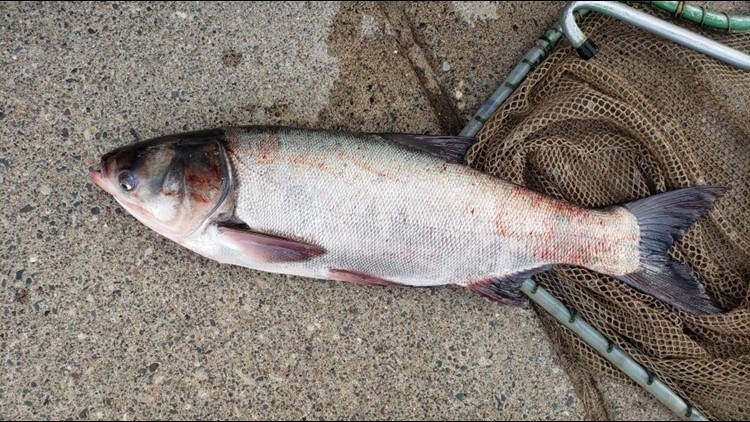MINNEAPOLIS — State and federal agencies have spent millions of dollars to stop the spread of invasive carp still threatening the health of waters in the upper Midwest, including a recent data-backed effort using transmitters to track individual fish and net large numbers of them.
In Minnesota, the Department of Natural Resources (DNR) said Friday it partnered with Wisconsin's DNR to capture 323 invasive carp from "Pool 6" of the Mississippi River. The agency said it was the largest single capture ever from a body of water in either state.
“While it is certainly concerning that we have captured this large number of invasive carp in Pool 6, it is likely that these adult fish moved upstream from other locations and were not the result of reproduction in Minnesota waters. DNR will continue to evaluate the data and work with its partners to learn everything we can, while we also work to remove additional fish,” said DNR invasive carp coordinator Grace Loppnow said.
The DNR reported it captured 296 silver carp, 23 grass carp and four bighead carp, which officials said was made possible by tracking tagged fish, leading them to commercial fishers and DNR staff for removal. Their tools are varied but include electric barriers, walls of bubbles and underwater speakers used to net large numbers of carp.
"Wisconsin DNR crews located six tagged invasive carp in Pool 6 last week. Those detections, along with observations by our contracted commercial fisher, led to the successful removal of these invasive carp,” Loppnow said.
Invasive carp species — bighead, black, grass and silver — were imported to the U.S. in the 1960s and 1970s in an effort to address algae, weeds and parasites in aquaculture farms. But they escaped through various means, took hold in the Mississippi River basin and have since spread north. The fish are voracious eaters, competing with native species for food and habitat.
Wildlife agencies at the federal and state levels have fought for years to slow the spread of carp across the Great Lakes and protect the region's $7 billion fishing industry — recognizing that eradication is unlikely.
Federal agencies such as the U.S. Fish and Wildlife Service have also helped build a network of receivers extending from the St. Croix River in far northern Wisconsin to the Gulf of Mexico to record tagged invasive carp’s movement, with periodic data collection. The first receivers were deployed in the Illinois River in an effort to stem migration into Lake Michigan in the early 2000s.
Beginning around 2018, managers started placing new, solar-powered receivers around the Great Lakes region that could track tagged carp and send instant notifications to observers.
WATCH MORE ON KARE 11+
Download the free KARE 11+ app for Roku, Fire TV, Apple TV and other smart TV platforms to watch more from KARE 11 anytime! The KARE 11+ app includes live streams of all of KARE 11's newscasts. You'll also find on-demand replays of newscasts; the latest from KARE 11 Investigates, Breaking the News and the Land of 10,000 Stories; exclusive programs like Verify and HeartThreads; and Minnesota sports talk from our partners at Locked On Minnesota.
- Add KARE 11+ on Roku here or by searching for KARE 11 in the Roku Channel Store.
- Add KARE 11+ on Fire TV here or by searching for KARE 11 in the Amazon App Store.
- Learn more about the KARE 11+ app for Apple TV in the Apple App Store.
- Learn more about KARE 11+ here.
Watch more local news:
Watch the latest local news from the Twin Cities and across Minnesota in our YouTube playlist:



